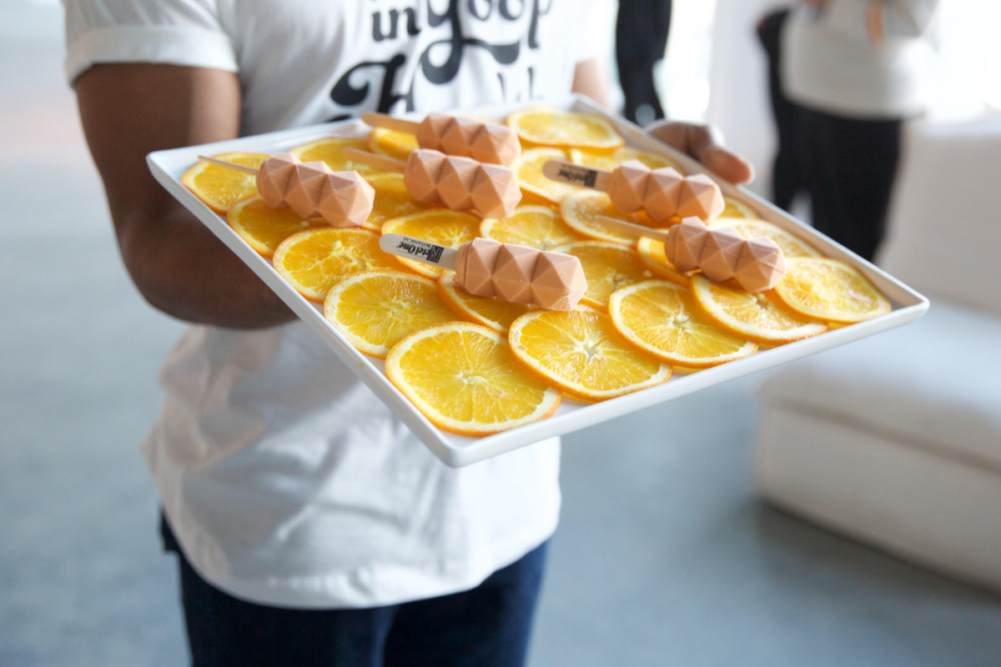LOS ANGELES — Collaborations with Starbucks, Apple, Nike and others helped Dream Pops build a following long before its products hit shelves, said David Greenfeld, co-founder and chief executive officer.
The five-year-old Los Angeles-based startup manufactures and markets plant-based frozen desserts formulated with coconut milk, coconut sugar, fruits and herbs. Inspired by Colombian paletas, varieties include mixed berry, chocolate with lion’s mane mushroom, vanilla matcha, coconut latte, and mango rosemary. The pops feature a geodesic shape designed to prevent drips and sticky fingers. Recipes are developed by three-star Michelin chef Juan Amador and food scientist David Marx.
Prior to selling pops online or in stores, Mr. Greenfeld, a former investment banker, turned to co-branding partnerships to create buzz. In one year, the company executed more than 50 partnerships and introduced Dream Pops to more than 300,000 new customers, generating $250,000 in revenue and placing its products at the “center of shared branded moments and experiences,” Mr. Greenfeld said.
Dream Pops has partnered with a variety of businesses across technology, retail, fitness, alcohol beverages, luxury fashion and cosmetics industries, setting up a sampling station at special events to serve frozen pops featuring custom packaging, flavors, colors and shapes. Limited-edition items have included Paloma Dream (grapefruit, lime and tequila), The Picante (chili pepper, cilantro and lime juice) and Eton Mess (meringue, berries and vanilla).
“Here’s the real beauty of it — instead of covering all of the associated costs of sampling or demoing our product, we get paid by brands with major clout to market our products, often at highly Instagrammable events,” Mr. Greenfeld said.
A business-to-business collaboration strategy is a “marketing triple threat” that many consumer brands are missing, he said.
“Having a few collabs under your brand’s belt will also help open up the retail floodgates,” he said. “In a sea of thousands of brands that a potential buyer is looking at, being able to say your brand ‘just did a collab with (insert major company here)’ provides an immediate sense of legitimacy and strengthens the argument that your brand should have shelf space.”
Dream Pops launched its first major collaboration four years ago with consumer electronics company Beats by Dre, an Apple subsidiary lauded for its premium design and celebrity endorsements, Mr. Greenfeld said.
“I didn’t know anyone at the company or have any special connections,” he said. “But I did have years of experience building pitch decks as an investment banker. I credit the professional look of our early pitch decks as a major factor that helped us get our foot in the door with big brands like Beats. At the end of the day, they want to know that your product will be additive to their brand’s image — not the opposite.”
His pitch deck detailed Dream Pops’ innovative approach to ice cream and its value propositions, plus rendered mock-ups illustrating a potential Dream Pops x Beats partnership. Using 3-D printing technology, Dream Pops created a frozen pop resembling the Beats by Dre logo.
“In the end, we landed the partnership and got Dream Pops into thousands of hands at Beats’ Coachella party, one of the most ‘Instagrammable’ events of the weekend, garnering millions of impressions,” Mr. Greenfeld said.
For early-stage brands pursuing a similar pre-launch strategy, he recommends partnering with celebrities and content creators, consumer brands, retailers, restaurants, spas and amusement parks, and targeting events such as store openings, product launches and premieres. A prospective partner should share similar values, he added.
“If you are a health and wellness brand, McDonald’s probably isn’t the right vibe,” he said.
Today, Dream Pops are sold in thousands of retailers nationwide, alongside a newer offering, Dream Bites, which are vegan chocolate-coated frozen dessert bites. Mr. Greenfeld credits the brand’s retail success to his early efforts forging partnerships and establishing a strong digital presence.
“In the early days of Dream Pops, I thought that if we just packaged the product and sold it in retailers (without building brand) right away, we would die a slow CPG death,” he said. “On top of that, most brands have an incredibly difficult time getting their products on shelves at all.
“Without a loyal following built up, the early days of retail can be nearly impossible. You usually only have one shot to execute on shelf.”





